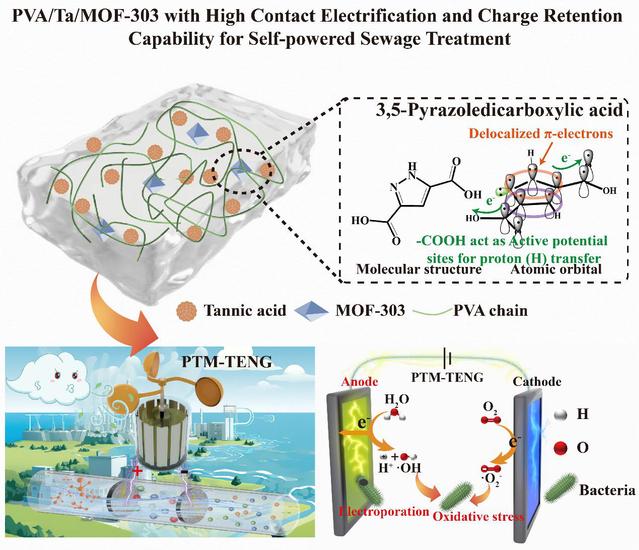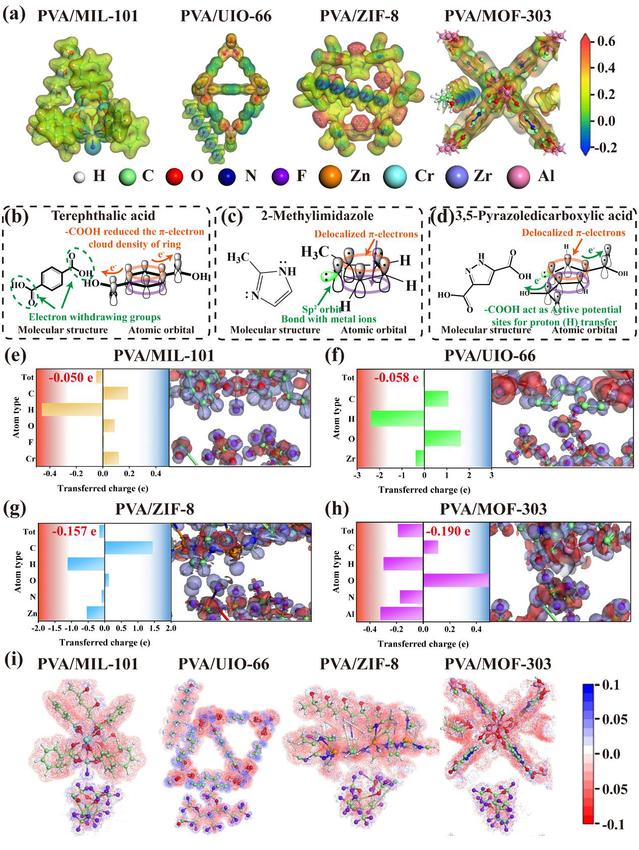Recently, the research team led by Professor Chen Shougang from the School of Materials Science and Engineering at Ocean University of China has achieved significant breakthroughs in the field of self-powered antifouling for marine equipment. The related paper, titled Regulating Contact Electrification and Charge Retention Capability with Metal-Organic Frameworks in Triboelectric Nanogenerator for Self-Powered Sewage Treatment, was published in the internationally renowned journal Advanced Functional Materials (IF: 18.5). Professor Chen Shougang serves as the corresponding author, and Sun Xiao, a doctoral student from the class of 2021, is the first author. This study innovatively introduces metal-organic frameworks (MOFs) to enhance the charge regulation performance of triboelectric nanogenerators (TENGs), providing a novel self-powered solution for marine fouling prevention. The findings demonstrate promising applications in areas such as marine engineering equipment protection and sustainable maintenance of offshore platforms.

Triboelectric Nanogenerators (TENGs) for Marine Wind Energy Harvesting and Self-Powered Antifouling
Marine biofouling is characterized by its extensive coverage, wide distribution, long-distance spread, and strong diffusivity, posing significant threats to marine resources and human health. While electrocatalytic antifouling technologies have been widely adopted, they suffer from drawbacks such as high manufacturing and application costs, difficulties in building offshore power grid lines, and substantial energy consumption. There is an urgent need to develop novel electrochemical sterilization and antifouling systems to meet practical demands. As a cutting-edge energy harvesting approach, triboelectric nanogenerators (TENGs) can convert renewable energy sources like wave and wind energy in marine environments into electrical power, enabling self-sustained operation for various devices and electrochemical processes. However, TENGs are highly susceptible to external environmental fluctuations, leading to unstable outputs and poor durability. Therefore, optimizing material and device designs to overcome the adverse effects of harsh marine conditions on service life and electrical performance is critical for establishing a stable, long-term self-powered antifouling system.

Optimizing Contact Electrification Performance of PVA-Based Triboelectric Materials via Ligand Chemistry Modulation in Metal-Organic Frameworks (MOFs)
To address these challenges, the research team employed metal-organic frameworks (MOFs) to regulate the contact electrification and charge retention capabilities of polyvinyl alcohol (PVA)-based triboelectric materials, aiming to enhance their service life and stability in harsh marine environments. By modifying the ligands, functional groups, and central metal ions of MOFs, they achieved effective tuning of contact electrification performance. Specifically, the high electron-donating ability of pyrazole rings and charge-transfer promotion from -COO⁻ groups in MOF-303 maximized contact electrification, yielding a charge density of 361.43 µC/m² and a power density of 33.55 W/m². Computational analysis revealed that deep-layer MOF-303 could act as a charge trap to reduce charge dissipation. Additionally, hydrogen bonds, coordination bonds, and electrostatic interactions between MOF-303 and PVA/Ta endowed the material with superior mechanical properties, anti-swelling, and anti-aging characteristics, significantly extending its durability in marine conditions.The triboelectric nanogenerator (TENG) was used to simulate marine wind energy harvesting. When integrated into a self-powered sewage treatment system, it achieved efficient inactivation of Escherichia coli and Staphylococcus aureus (sterilization rate >99.99%) and degradation of organic pollutants such as Direct Red 4BS and Direct Green (>95% degradation) within 20 minutes. This study represents a significant advancement in improving the contact electrification and charge retention of triboelectric materials, offering a promising solution for efficient energy harvesting and self-powered antifouling applications in marine environments.This work was supported by Special funds such as the Joint Fund of the National Natural Science Foundation of China, Shandong Province’s Major Innovation Project, and the West Coast President’s Transformation Fund Key Project.
Furthermore, the research team has been dedicated to research in the field of marine micro-nano energy harvesting and self-powered sterilization and antifouling in recent years, and has made significant progress.( Nano Energy2024, 124, 109511; Mater. Today Nano2023, 24, 100410; J. Colloid Interface Sci.2024, 654, 1209-1219)
Original Paper Link: https://doi.org/10.1002/adfm.202422803
Contributed by: Sun Xiao


